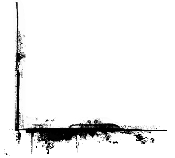
|
|
|
|
|||
| Having gained experience in magazine illustration work ealry in his career, Picasso became fascinated by the colorfull Sunday comic section of the Baltimore Sun that the collectors Clarabel and Etta Cone sent from America during the first years of the century. In fact, he traded some of his own drawings to the sisters for them. His knowledge and enthusiasm for the comic medium was rekindled when he embarked in 1937 on a project to raise funds aiding Spanish Republicans and to create a propagandistic work in opposition to the dictator Francisco Franco. Consisting of eighteen scenes on twoplates, the book was originally designed as a group of postcards, which would have the greatest opportunity for circulation. One utterly satirical plate was compleied on 8 January 1937 and five of nine sections of the second plate were completed the next day. The aquatint was added to these fourteen sections on 25 May. Having decided against cutting up the pIates for postcards and with the memory of the brutal destruction of Guernica (on 26 April 1937) still fresh in his mind, Picasso created the final four sectiorts on 7 June. Satire has been replaced by sorrow in these sections, the results of Franco's brutality memorialized by Picasso's weeping women and dead children that would later become a part of his painting, Guernica. These pates were sold in an edition 1000, accompanied by a passionate surrealist poem by Picasso. Theseprints serve as a vicious, sometimes funny, sometimes sad denunciation of the Franco regime with a twisted- face monster the focus of Picasso's anger in twelve of the eighteen plates. | |||||
 |
|
||||
|
|